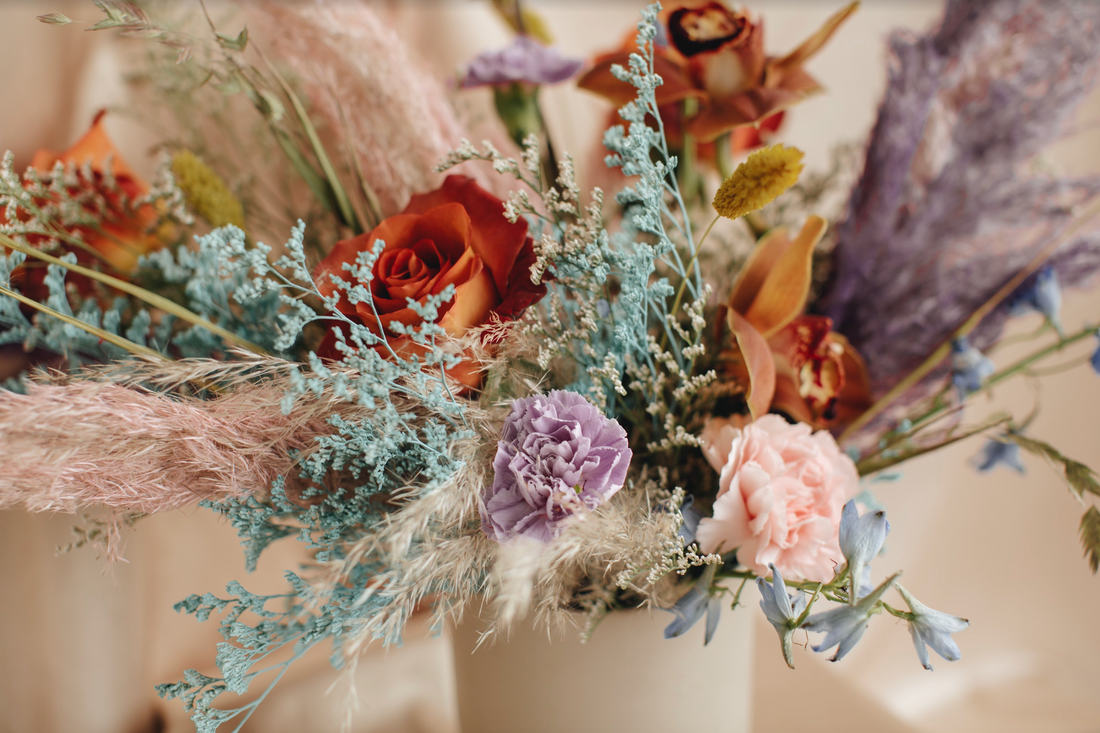In our last arrangement deep-dive, we talked about styling with greenery. In this installment of our Anatomy of an Arrangement series, I want to consider fillers and secondary flowers.
Fillers can be really fun—even though they sometimes get a bad rap. Some common examples include carnations, wax flower, alstroemeria, common tulips, button mums, statice, solidago, or Queen Anne’s lace. If you only had gorgeous focal flowers, your eye wouldn’t know where to look: we need our fillers to enhance the showstoppers, and make them pop.
Think of them as the supporting actors, or the busser at a nice restaurant. They bolster the main character or server, and provide essential scaffolding. I'm partial to them because I'd prefer a background role any day to being center stage; I loved being a busser in high school. So, the fillers are my self portrait. They help marry your other elements, and create connection between floral ingredients. If your arrangement looks disjointed, they can connect a yellow bloom to a pink bloom, for example, by being variegated, or maybe having an orange hue. They're typically cheaper—usually a cluster of tiny flowers that make up a larger overall shape. They’re seemingly average, but in tandem with your showstoppers, they have the opportunity to make magic and are totally worthy of our full attention.
Ways they help: with color blocking your arrangement; covering your holes; and hiding the bones of your arrangement. Fillers expand your options for making a design unique and special. They invite a more natural order. Focal blooms are not common in nature and come in limited quantities, by having short blooming seasons, having limited availability, or producing limited blooms—for example, I'm still waiting for my peonies to develop more than five blooms per season. Fillers can really be anything, too. Any texture, grass plume, colorful leaf cluster, flowering branch or shrub—the sky's the limit.
Typically, I start with my greens and focals, and then use my fillers to round out and complete my arrangement, to create cohesion and solidify the overall look. I have two general rules I consider with fillers. I always want to combine special with ordinary, ordinary with special. So if my focals are common, I'll make my fillers more unexpected. If my focals are total snowflakes, my fillers can be more generic. As a child, I took china painting lessons, floral paintings on porcelain. We were always taught that you needed "muddy" colors—especially in your shadows—to make the bright colors pop. That's what fillers can achieve.
If you want an extra challenge that can take your design to the next level, lose the focal flowers entirely and try to use fillers in mass, either color-blocked or monochrome to build an interesting shape. Average materials used in new ways—or in abundance—are the secret sauce of many design forms, like architecture, large scale installations (hello Anthropologie’s window displays!), and of course, flower arranging.

